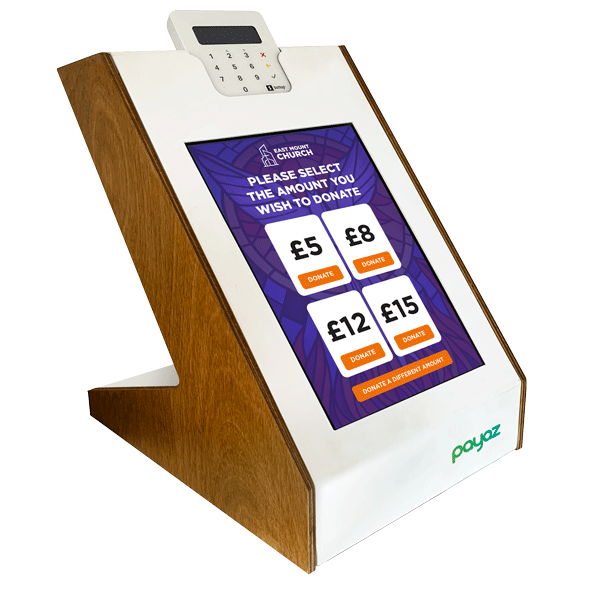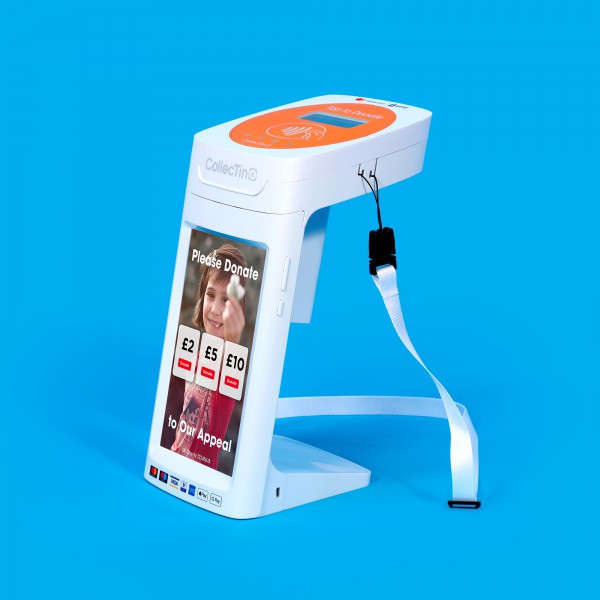Contactless donations (sometimes called tap-to-give) can now reasonably called an essential method of giving for churches. On this page we introduce some of the main options but for a more in-depth conversation you can contact the Generous Giving Adviser, Joshua Townson, via joshua.townson@oxford.anglican.org or 01865 208 757.
Contactless Card Readers
A contactless card reader is a small terminal that enables donations to be made to your church via debit or credit card, or by using Apple / Android pay on a smartphone or watch, up to a value of £100. With fewer people carrying cash it is becoming essential for a church to be able to offer a contactless option so that it doesn't miss out on anyone's generous gift. Remember, contactless giving is about adding a new way for people to give in the way that's easiest for them, not about taking away any other method of giving.
cash it is becoming essential for a church to be able to offer a contactless option so that it doesn't miss out on anyone's generous gift. Remember, contactless giving is about adding a new way for people to give in the way that's easiest for them, not about taking away any other method of giving.
These machines can be useful in many different ways - from enabling collections at special services and festivals, to taking payments for sales at church cafés and other social events - but different readers do different things so you'll need to make sure you pick the right one for your church. This will depend on how much you want to spend and how you plan to use the reader. For help with the different options you speak to the Generous Giving Adviser, Joshua Townson, by email or on 01865 208 757.
Setting up a device
The Generous Giving Adviser, Joshua Townson, is available to answers questions about setting up a device, or even to set it up with you in person. The most popular devices, including CollecTin and Payaz (pictured) use a system based on GiveALittle and SumUp.
Diocesan Loan-to-Buy Scheme
 The Diocese of Oxford has a loan-to-buy scheme. This allows you to borrow a CollecTin device (pictured) for three months to decide if you like it. If you like the device you can purchase it from us for the subsidised price of £250 or, if not, you can simply give it back for free. The only costs during the loan period are the payment transaction fees (approx. 1.69%) and we have options available for churches without Wi-Fi. There is currently a waiting list for this scheme but if you would like to be added to the list please email the Generous Giving Adviser, Joshua Townson.
The Diocese of Oxford has a loan-to-buy scheme. This allows you to borrow a CollecTin device (pictured) for three months to decide if you like it. If you like the device you can purchase it from us for the subsidised price of £250 or, if not, you can simply give it back for free. The only costs during the loan period are the payment transaction fees (approx. 1.69%) and we have options available for churches without Wi-Fi. There is currently a waiting list for this scheme but if you would like to be added to the list please email the Generous Giving Adviser, Joshua Townson.
An alternative to a physical contactless device - or a good option while you're on the waiting list - is to create some QR codes. Have a look at our information about these here.